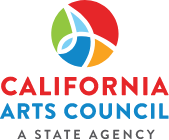Many barriers to analyzing and reporting on education data have fallen in recent decades, putting the work described in this toolkit within reach of arts stakeholders who couldn’t have dreamed of doing anything like it just 20 years ago. Even so, this toolkit may not be for everyone. It has been written for:
People who can bring on partners. This toolkit is for anyone who can assemble a robust network of state, regional or local partners to pursue an arts education data initiative. Such a network could include representatives of state arts agencies, state education agencies, arts or education nonprofits,
state policymakers or influential parent and community organizations. The network could also include representatives of regional or local nonprofits, school districts or community groups. A successful effort need not involve all these agencies and organizations, but it will probably falter if few or none of
them are engaged. You can’t do this alone.
People who lack expertise in data. This toolkit is written for people who are not experts in state education data systems, data analysis or data reporting. If you are an expert in these areas, you may find parts I and V useful, but Parts II through IV may cover information you already know. (The detailed
Table of Contents can help you understand what each part of the toolkit contains.)
This toolkit cannot teach a non-expert how to analyze large datasets, employ sophisticated statistical models, create the computer code behind leading-edge education data dashboards or draft legal documents to guide data sharing. It can help you understand when you need to bring on help.
This toolkit can help you determine who can provide that help – data analysts, programmers or lawyers, for example. Sometimes, help will be close at hand; some state agencies may be able to analyze data for you, or a tech-savvy intern could help you create data dashboards. In other cases, you
may have to hire help. This toolkit aims to give you the information you need to choose strong partners, ask informed questions and anticipate key challenges and opportunities along the way.

